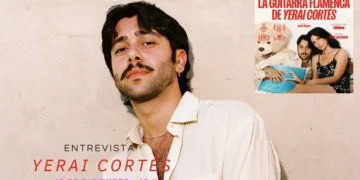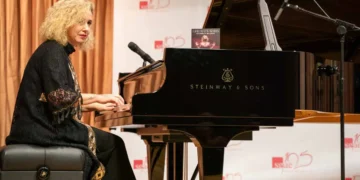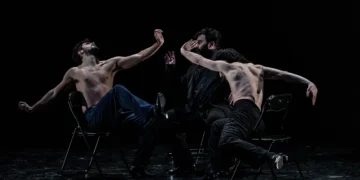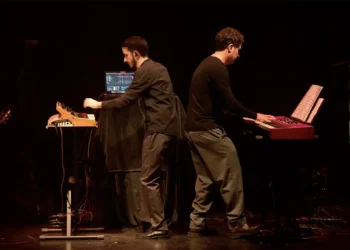|
Valle
| Daily coverage BIENAL DE FLAMENCO sponsored by: |
A table in the corner of the stage receives knuckle-rapping
to the rhythm of soleá. Triana and Lebrija. Four people doing
compás: Curro Fernández (the proud father), José
de la Tomasa, Pedro Peña and Esperanza Fernández.
The guitar forgotten in the darkness waits silently. Curro lets
his voice rip until there’s no more. José de la Tomasa
gets into the swing. Pedro Peña shouts ‘ole’
at each turn of the voice. And Esperanza…
Miguel Ángel’s guitar can no longer resist. The soleá
now continues with music: “Levanta y no duermas más…”,
“Se te caigan las carnes..” sings Esperanza, pulling
her insides out. She sends each song to the skies and they are little
pieces of madness, her ‘ay’s are delirious. Niña
de los Peine’s farruca is danced by Miguel Vargas. The moon
dominates the setting and two guitars show the way, Manolo Franco
and Miguel Ángel Cortés. The gypsy girl sings with
feeling, taking her time, elongating sweetly.
The dedications continue and now it’s for Antonio Mairena
por romeras. She measures herself out and sings naturally, taking
on the compás as if it were part of breathing. She sings
malagueñas: “Eso que tengo es locura”, and ‘locura’,
a wonderful kind of madness is what this recital provoked, an improvement
over what we’ve been seeing now for some time, and it’s
a welcome change. Not only is this a young singer generally considered
(by yours truly as well) to be the best, or one of the best flamenco
performers of her generation, but she doesn’t limit herself
to the standard repertoire, she “investigates” and tries
other forms she isn’t quite on top of for the moment. Without
any doubt the sensitivity, the gypsy delivery and good taste she
gives to all her interpretations makes almost anything that comes
out of her mouth hit straight through to the core.
The gypsy neighborhood of Triana has come to rest in her being.
The glowing embers of her soul and the blackness of her seguiriya
surge from her throat. She hammers home her rough and unforgiving
lament. The lines she sends out seem to do physical damage and the
sound is profound. The masculine cantes belong to a woman on this
night and no one can take them away from her. She controls her passion
in the compás of her blood.
With tientos tangos she searches for a cure to love-sickness dedicated
to her grandfather Vega. Cautious in the tientos and without excesses
in the tangos. Well-measured, playing with the silences, with the
sound, the give and take, with Miguel Ángel’s accompaniment
that triggered applause with lightning-fast thumbwork and wonderful
falsetas. Then Manolo Franco accompanies her por granaína
and two dancers participate contributing little more than a visual
aesthetic, mere adornment, but rather an attractive addition. Esperanza’s
cante is mellow and rich in shading, linking the end of the granaína
with the media granaína and closing with finesse.
To Lebrija for bulerías. Two guitars, palmas and a few turns.
This gypsy girl is right at home and offers a string of verses for
every taste. Her little dances are full of art and when she steps
away from the microphone the sound of her voice keeps ringing out
in every corner of the theater.
For curtain call, a round of tonás. Curro Fernández,
José de la Tomasa, Pedro Peña and Esperanza. Shows
like this, at this stage of the game, dignify the Bienal and make
it worthy of being called the “Bienal de Arte Flamenco”.
|
Esperanza Fernández |
|
|





















